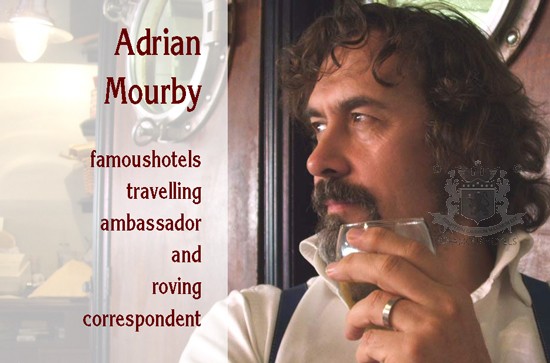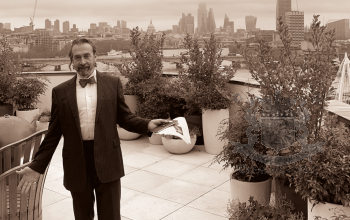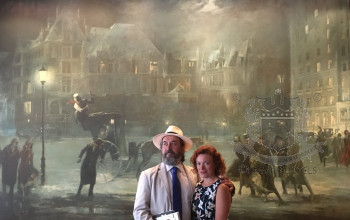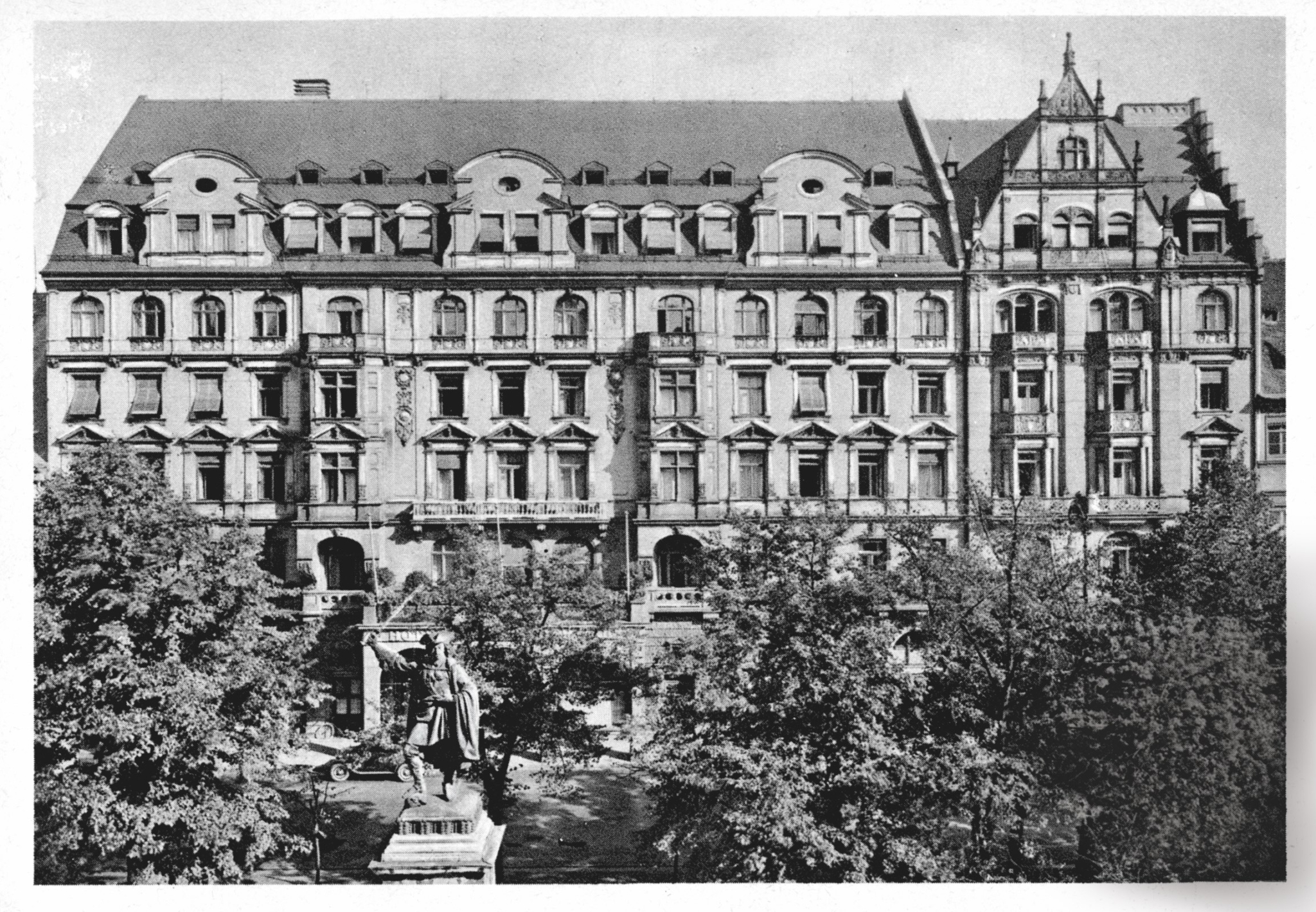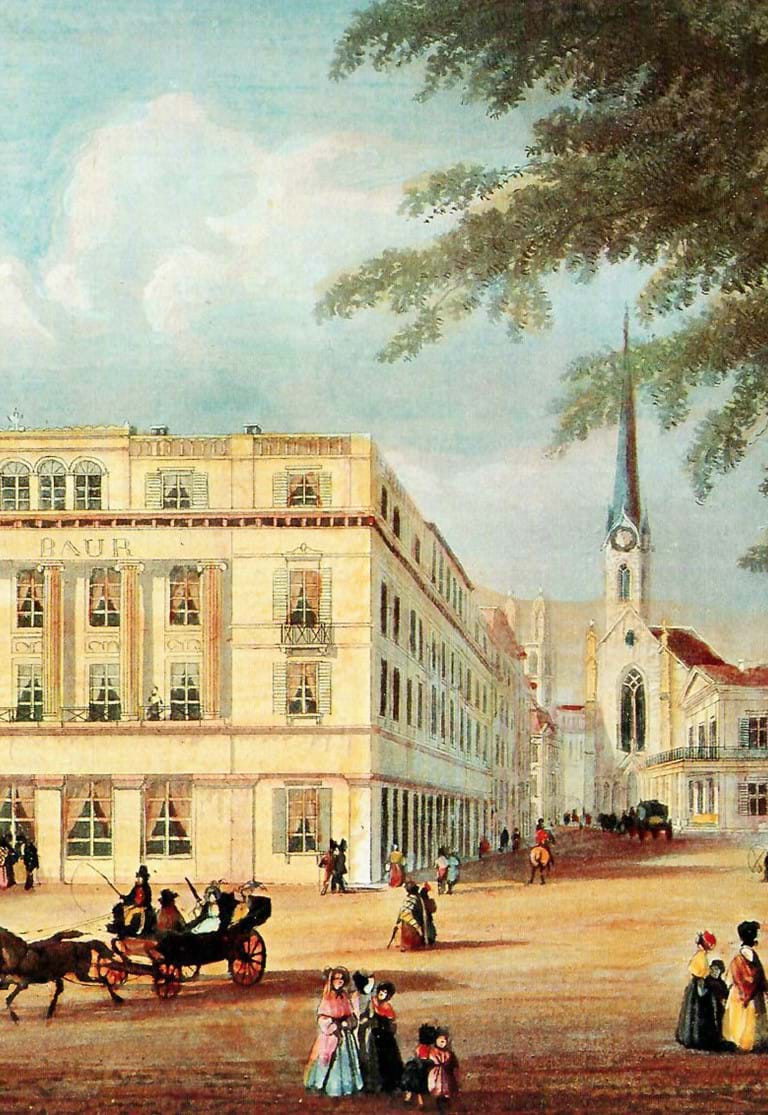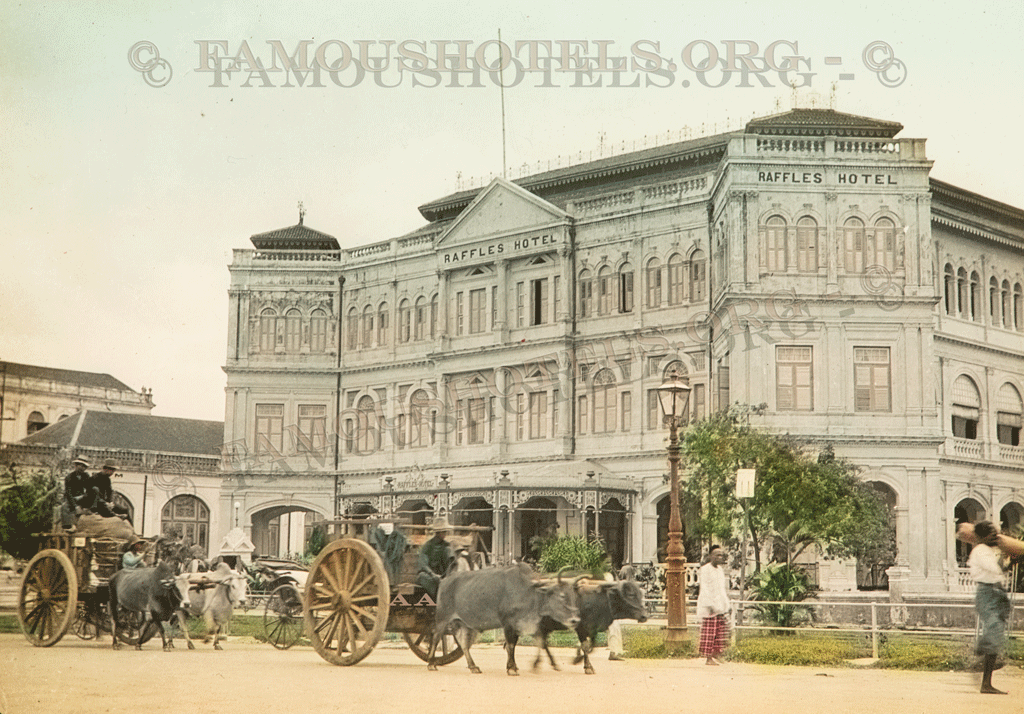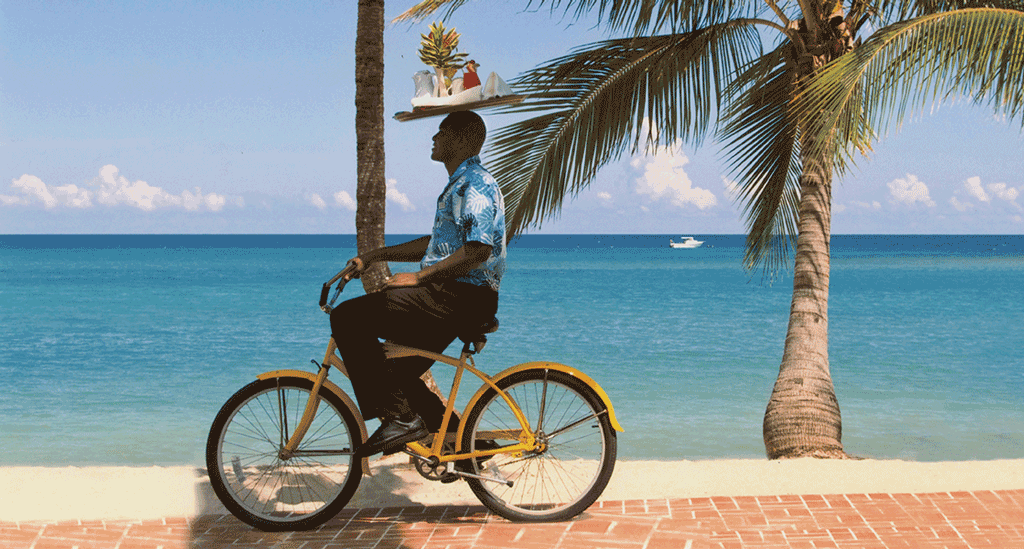PARIS: Mourby of Meurice
( words)
After staying at a number of hotels where everything -from the lights to the TV, from the window blinds to the air conditioning - is controlled by one complex sheet of interactive glass it is rather nice to return to Le Meurice in Paris and discover that lights are still worked by a switch and that if you want coffee in the morning you ring room service. The relentless march of Nespresso has not reached this discreet hotel on the Rue Rivoli, not yet and maybe never.
Not much changes at Le Meurice and deliberately so. From early in its nineteenth century history, the style of the hotel settled on Louis XVI furniture with a livery of celadon and taupe and a coat of arms featuring greyhounds.
There is no hotel in Paris with a history as long as that of Le Meurice. The original M. Meurice, a postmaster in Calais named Charles Augustin Meurice, set up his first hotel in the English Channel port in 1771, but opened a second hotel in Paris in 1815 knowing that this would be the ultimate destination of visitors. M Meurice’s aim was to make life easy for the English traveller who arrived in Calais with no French currency or command of the language. It was said at the time that the only word of French that an Englishman needed on arrival in France was "Meurice”. The hotel would take care of everything else.
In 1835, Meurice’s successors moved the hotel one city block closer to Tuilleries from Rue Saint-Honoré to its current location on the Rue de Rivoli. Its entrance and lobby however were built on the quieter Rue de Mont Thabor. With easy access to the Louvre, Le Meurice became for generations of wealthy Francophiles the only hotel to stay in when visiting Paris. In 1935 the poet Léon-Paul Fargue famously divided the residents of his city’s hotels into three categories: "poor, good and of the Meurice." This understated hotel was also the residence of the last German governor of Paris, Dietrich von Choltitz who famously took – and ignored – the call from Adolf Hitler to destroy the city while in his suite here.
Were von Choltitz or long-term resident Salvador Dali or indeed Giorgio de Chirico or Gabriele D'Annunzio, to return now they would find the Meurice very much as they knew it. The light-green corridors are as quiet as ever for people come and go discreetly at Le Meurice. The only really big changes have been 2000 when the hotel’s main entrance was moved round to Rue de Rivoli - a useful and long overdue development - and 2007 when under the twin geniuses of designer Philippe Starck and general manager Franka Holtmann, the ground floor was refurbished with a certain amount of decorative panache.
Today if you walk along Rue du Mont Thabor you can see the old entrance of the hotel, its name carved in stone above this side street. Even though its bedrooms had panoramic views over everything from Place de la Concorde to Arc de Triomphe du Carrousel, the lobby of Le Meurice did not face on to Rue Rivoli. The Rue du Mont Thabor entrance was quiet, with a covered entrance under which hotel guests could emerge from their carriages in comfort. Although this structure gave way to a more pedestrian-freindly entrance in the twentieth century, it wasn’t until 2000 that Le Meurice actually embraced its position on Rue Rivoli.
The new lobby is small for a hotel of the Meurice’s reputation. It almost seems squeezed in to the area left of the hotel’s Alain Ducasse restaurant (which used to be a patisserie and then a Guerlain shop). But the first thing you notice about the lobby its art works. Whereas many five-star hotels in Paris have sofas for guests to sit and be seen, Le Meurice has a double cane-bottomed chair designed by Philippe Starck in homage to Salvador Dali and various art works bought from winners of the annual Meurice Art Prize.
The Le Meurice Prize for Contemporary Art is now in its eighth year. Its mission is to support new artists and it does so by offering the artist and their gallery a €20,000 endowment. All types of medium are considered, from painting and sculpture to photography and video. Six candidates are shortlisted annually. The last winner, Mark Geffriaud, triumphed with ‘Sketches’, a film and sculpture project. Previous winners have included Franco-Algerian photographer Zoulikha Bouabdellah, the draughtsman Eric Baudart, and the Anglo-French artist Alexandre Singh. All competitors need to have a French and an international aspect to their candidature.
The jury is always made up of academics and gallery directors as well as the previous year’s winner, Franka Holtman and Maryvonne Pinault, a celebrated collector of contemporary art.
At the moment there’s a very prominent pair of kissing Corinthian columns on display by Zoulikha Bouabdellah, winner of the first Le Meurice Prize for Contemporary Art in 2008. There is also a large mirror by Philippe Starck on display on whose surface you can write in the ice crystals but that is refrozen – and returned to a tabula rasa – every night. These and other pieces are a forceful nod in the direction of modernism but for me they do not redefine Le Meurice. It’s like discovering that your venerable great aunt has taken up collecting modern art rather than become a fully-fledged Bohemian. And personally we wouldn’t want that any way. Like all great art Le Meurice is timeless.
![]()
More about Charles Augustin Meurice: //famoushotels.org/article/804

